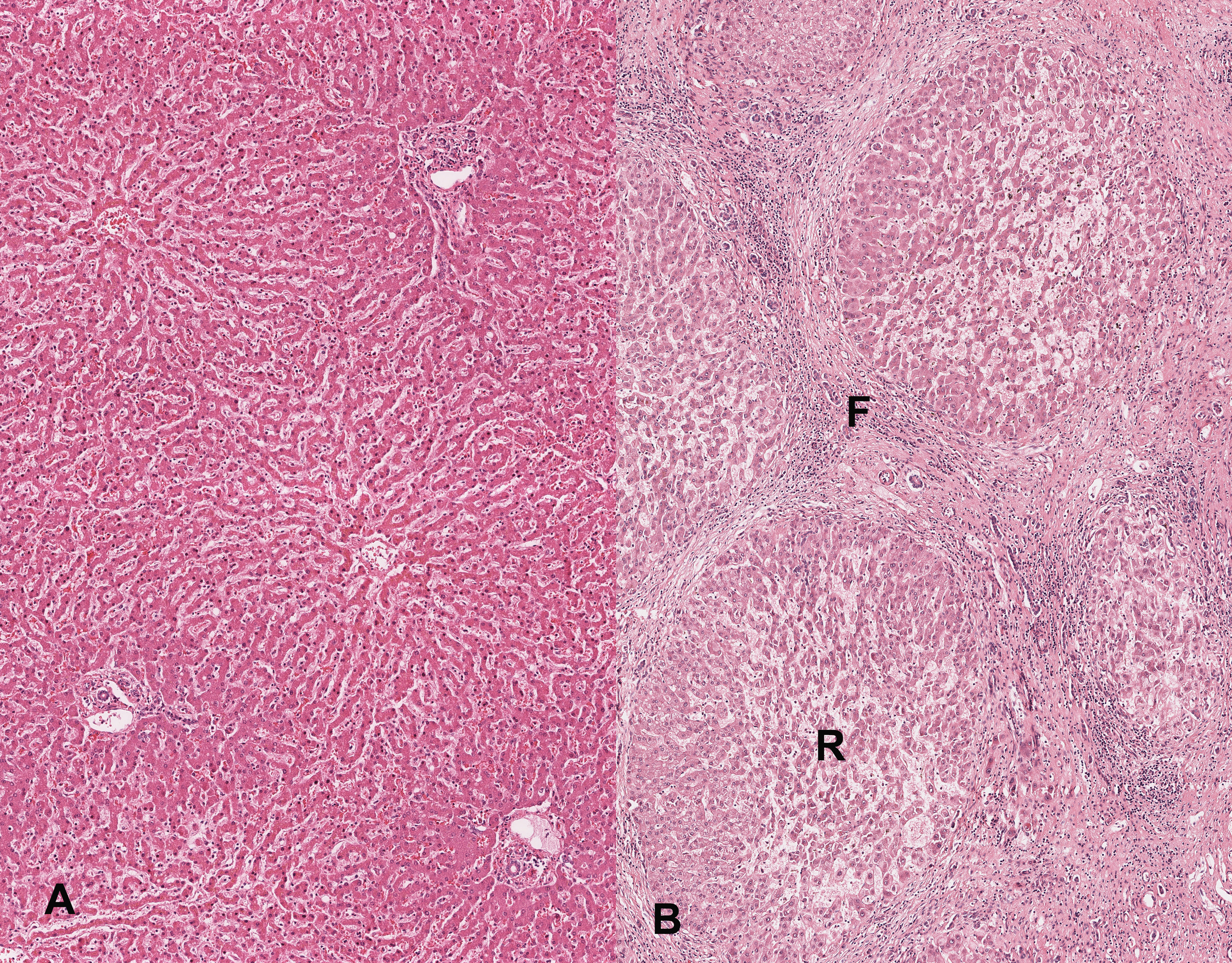

Age/sex: 53-year-old female
Size: 14.4 x 20.8 x 6.7 cm
A slice of liver shows numerous well-circumscribed nodules about 3 – 8 mm in diameter. The patient was obese and had diabetes.
Cirrhosis
Cirrhosis is a chronic liver condition in which the organ’s normal structure is altered by fibrosis and the development of nodules of disorganized hepatocytes. It has many causes, the most common being alcohol, hepatitis B and C virus infection, and non-alcohol related fat accumulation (non-alcoholic steatohepatitis (NASH), the diagnosis in this case). Each of these etiologies can cause injury or death of liver cells followed by fibrosis and the formation of structurally abnormal liver cell (regenerative) nodules that develop as the liver attempts to heal.
The scarring and nodules result in decreased liver function and abnormal intrahepatic blood flow. These are associated with a variety of clinical signs and symptoms, including:
- ascites (fluid in the abdomen);
- gastrointestinal bleeding (often from abnormally dilated veins (called varices) in the lower esophagus);
- encephalopathy;
- liver cancer (hepatocellular carcinoma).
Cirrhosis was first described by John Browne in 1685 and was given its current name by René Laennec (see Specimen 14) in 1819.
Below: Histologic appearance of normal (A) and cirrhotic (B) liver (F - fibrosis; R - regenerative nodule).
Source: Rajaram, A. (2023).
